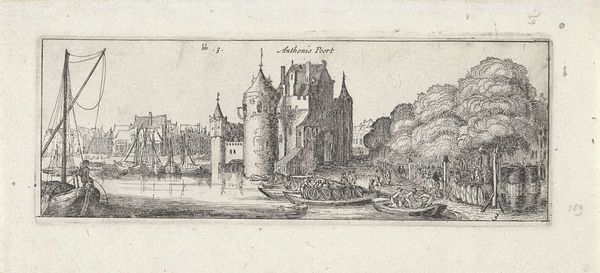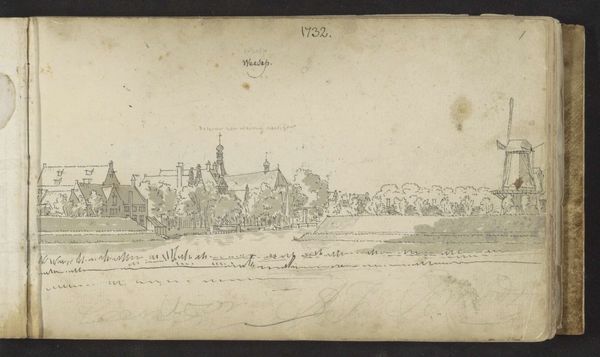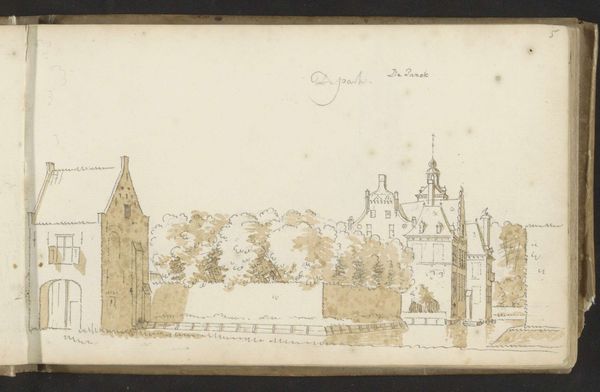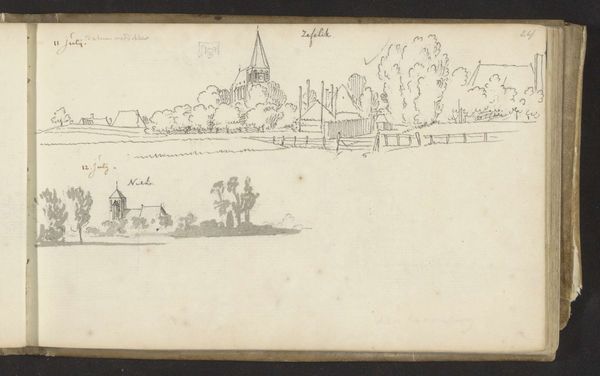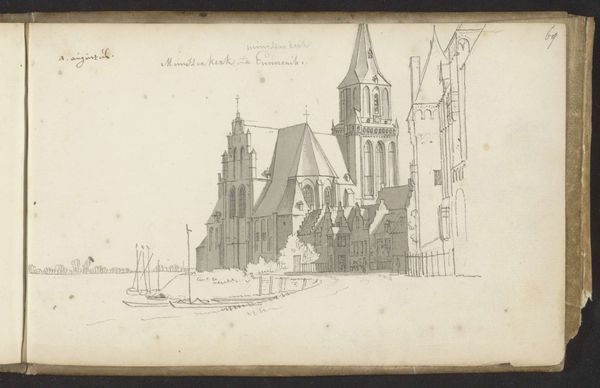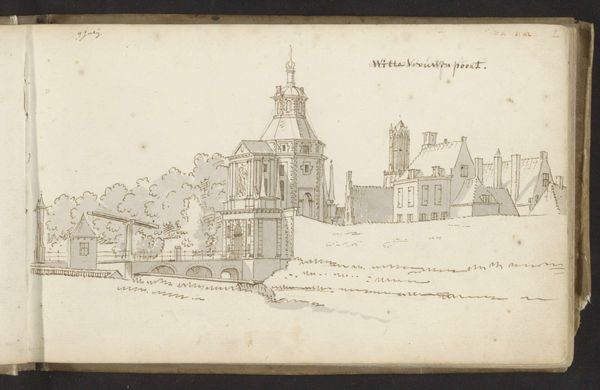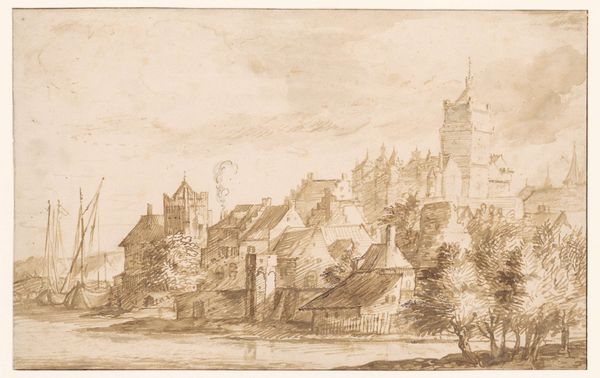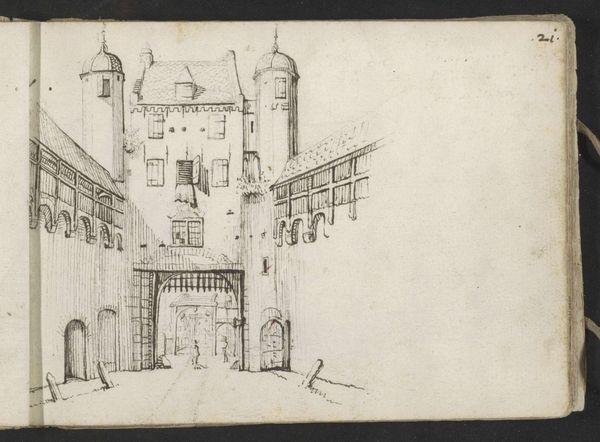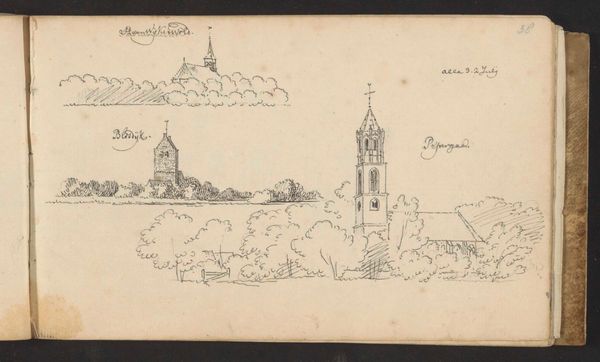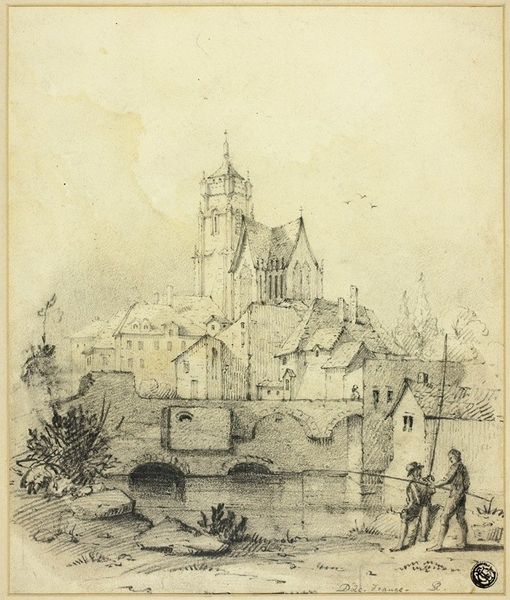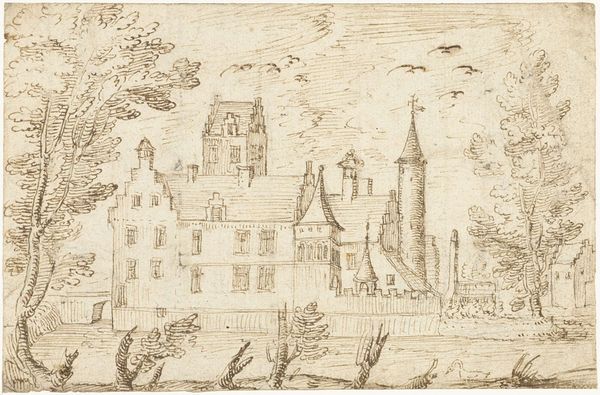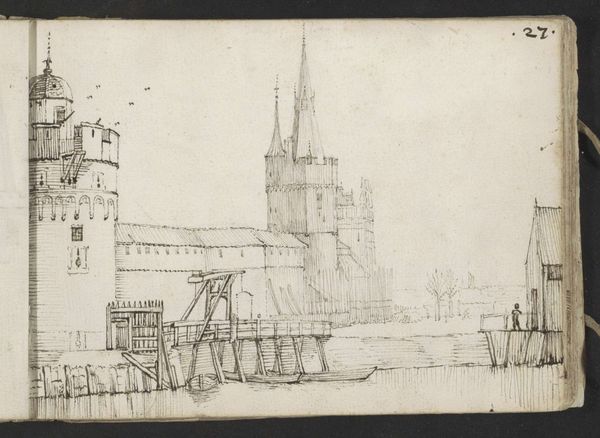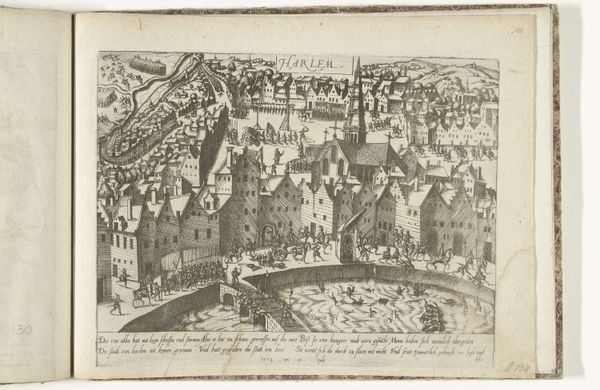
drawing, paper, ink, pen
#
drawing
#
aged paper
#
baroque
#
pen sketch
#
sketch book
#
landscape
#
paper
#
personal sketchbook
#
ink
#
sketchwork
#
pen-ink sketch
#
pen work
#
sketchbook drawing
#
pen
#
cityscape
#
genre-painting
#
storyboard and sketchbook work
#
sketchbook art
Copyright: Rijks Museum: Open Domain
Editor: So this is Abraham de Haen the Second's "Waterpoort en Sint-Aldegondekerk te Emmerik," made sometime between 1731 and 1737. It's a pen and ink drawing on paper, part of a sketchbook. It feels like a very personal record, almost like a visual diary entry. What catches your eye about this drawing? Curator: It's a fascinating glimpse into 18th-century Dutch civic life, and I'm immediately drawn to the Latin inscription. "Felix civitas quae tempore pacis de bello cogitat" – "Happy is the city that in times of peace thinks of war." What do you make of that phrase in relation to the imagery? Editor: I suppose it adds a layer of complexity. At first glance, it’s just a pleasant cityscape, but the inscription hints at underlying anxieties and the constant preparedness for conflict that defined that era. Does this theme show up elsewhere? Curator: Absolutely. Consider the prominence given to the Waterpoort, or water gate, which was both an entrance and a defensive structure. De Haen isn't simply capturing a picturesque view; he’s subtly reminding the viewer of the city's strategic importance and the ever-present threat of invasion. The art becomes a public instrument. What sort of political situation might that infer for Emmerik at the time? Editor: Knowing the history of the region as a contested borderland makes me see it differently now. The apparent tranquility is deceptive; the city is consciously projecting an image of strength and resilience through both its architecture and in artwork such as this drawing. It gives an added significance to how people wanted the location perceived by the broader world. Curator: Precisely. It also highlights the role of art in shaping public perception and reinforcing civic identity. We begin to understand how an artist, even in a seemingly simple sketch, could contribute to the political landscape. Editor: That's given me a lot to consider - that this is more than just a pretty picture. Thanks! Curator: Indeed, I will remember to more closely scrutinize landscape drawings with an awareness of potential messaging.
Comments
No comments
Be the first to comment and join the conversation on the ultimate creative platform.
